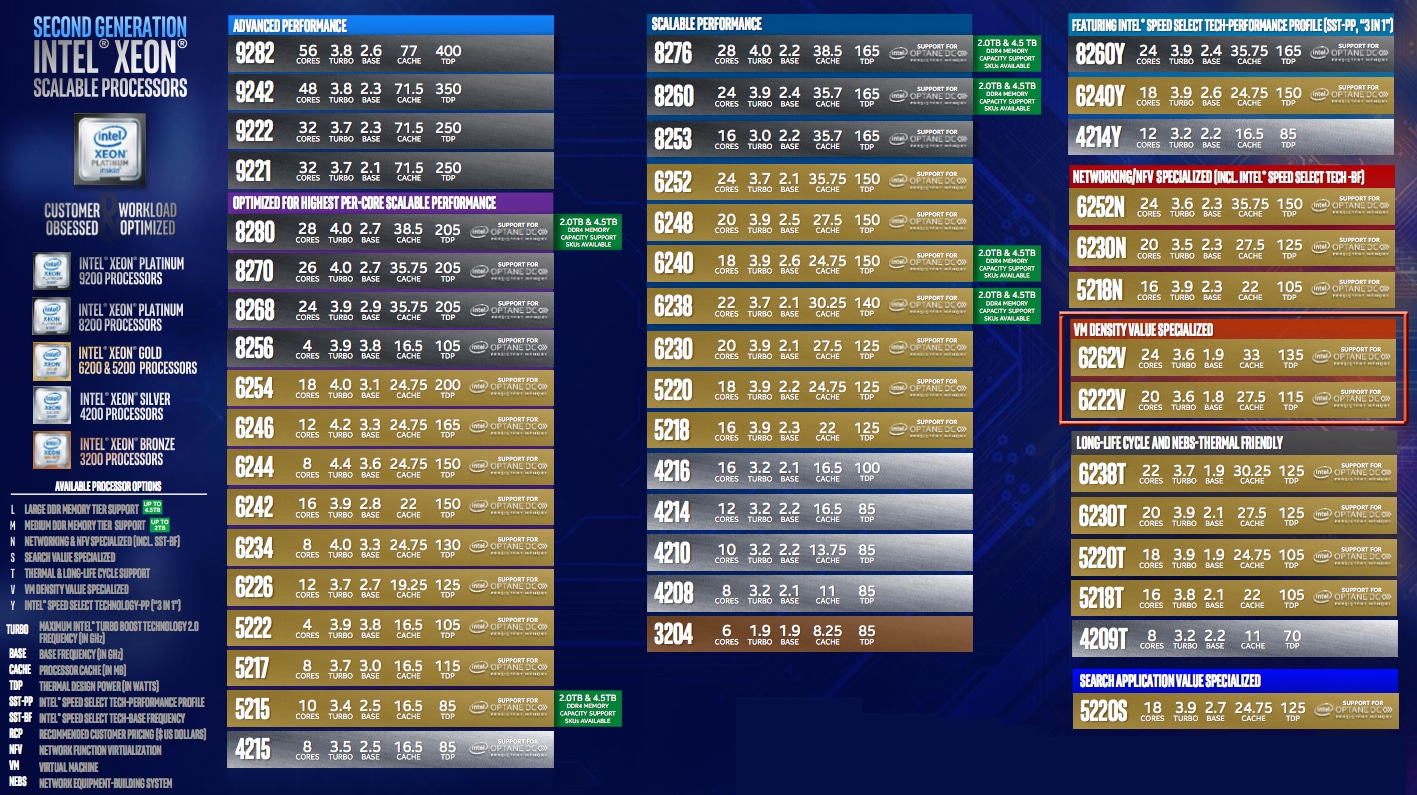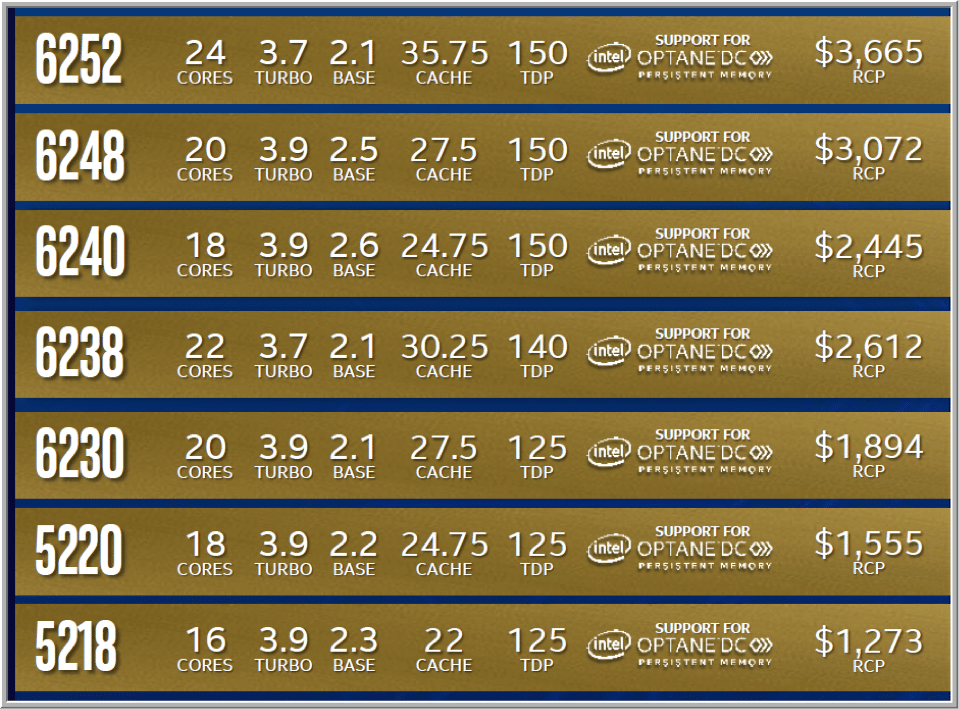
On April 2nd, 2019, Intel announced the release of the second generation of their Xeon Scalable CPUs. During the announcement they said that they had over 50 unique CPUs based on this technology. They did this in order to create CPUs to address very specific workloads. The CPUs that they announced ranged from a Xeon Bronze 3204 which has 6 cores to a Xeon Platinum 9282 which has 56 cores. In between there are a few specialty CPUs; in this article we will look the Xeon Gold 6262V and 6222V, which Intel tags as VM Density Value Specialized CPUs.

Second Generation Intel Xeon Scalable CPU SKUs

VM Density Value Specialized Second Generation Intel Xeon Scalable CPUs
To better understand these CPUs, it is helpful to first understand Intel’s naming scheme for their CPUs. The first digit is the processor level, the second is the processor generation (all Cascade Lake CPUs are 2nd generation processors), the third and fourth digits specify the processor SKU, and the last one or two numbers specify processor options for the CPU.
The first digit can range from 3-9 and specifies the level of the CPU. Models tagged as 32xxare Xeon Bronze CPUs. Models tagged as 42xxare Xeon Silver CPUs. Models tagged as 52xxand 62xxare Xeon Gold CPUs. Models tagged as 82xxand 92xxare Xeon Platinum CPUs. The lower numbered CPUs will have fewer cores, features, and run at lower speeds then the higher numbered CPUs.
The third and fourth digits specify the processor SKU; the higher the number, the more performant the CPU will tend to be.
The two letters at the end of the CPU SKU indicate special features that the CPU may have; for example:
- L – Support for large DDR memory (up to 4.5 TB)
- M – Support for medium DDR memory (up to 2 TB)
- N – Network-optimized CPUs
- S – Search engine
- T – Thermal and long-life cycle
- V – VM density value
- Y – Speed Select technology
The Intel CPUs mentioned at the beginning of this article, 6262V and 6222V, are both Xeon Gold CPUs. The 6262V is more powerful than the 6222V as it has 24 cores with a base speed of 1.9 MHz while the 6222V has only 20 cores and runs at 1.8 MHz.
Why are they tagged as VM Density Value Specialized CPUs?
When compared to other CPUs in the SKU list we can see that they have relatively more cores and have a lower base speed then other CPUs around this price point. This allows the CPUs to service more VM’s, albeit at a lower speed then other CPUs at this price point. One of the keys to having good performance on a server running virtual workloads is to have the VMs run on the same cores in a CPU whenever possible as this will result in better usage of the CPU’s L1 and L2 memory cache. So when running many VMs on a server having a CPU with more cores running at a slower speed will give better overall performance than having a CPU with fewer cores running at faster speeds. Also the 6262V and 6222V CPUs have Turbo mode so when not all the cores on the CPU are active those that are active have the ability to run at speeds up to 3.6 MHz. The VM Density CPUs also support Optane DC persistent memory (Intel’s new tier of storage/memory) which should increase the performance of VMs and software defined storage products such as VMware vSAN and Microsoft Azure Stack HCI.
VM Density Value Specialized Second Generation Intel Xeon Scalable CPU Prices
Second Generation Intel Xeon Scalable Gold CPU Prices
Intel has done a good job of designing features into specific CPUs in order to deliver more value to their customers. It will be interesting to see how the major vendors; Dell, Lenovo, Supermicro, Cisco, etc. incorporate the VM Density Value Specialized CPUs (6262V, 6222V) into their servers. In the coming months we will be doing independent verification of Intel’s 2nd generation of CPUs and Optane DC persistent memory to see if they deliver on the value that Intel is promising.
Sign up for the StorageReview newsletter


